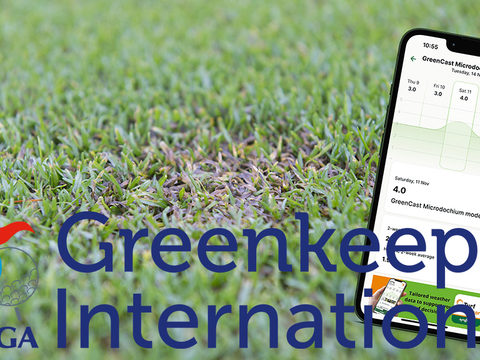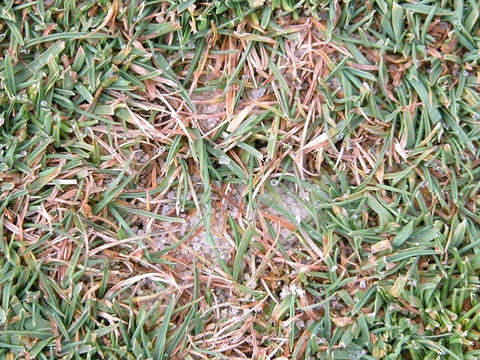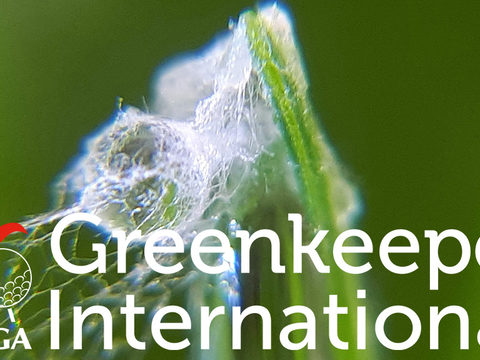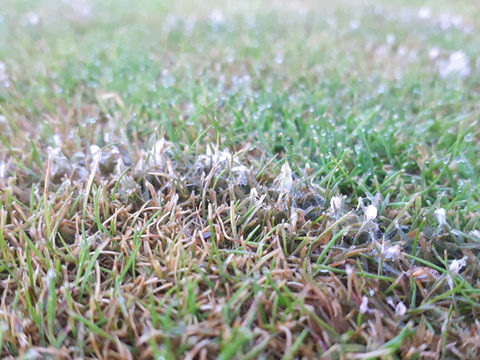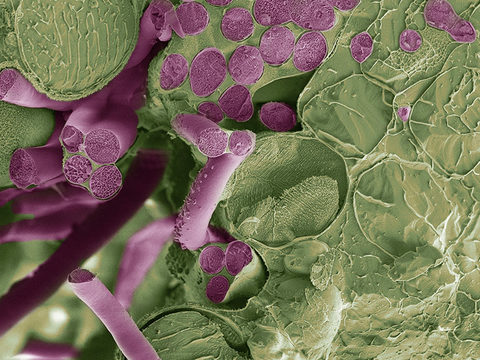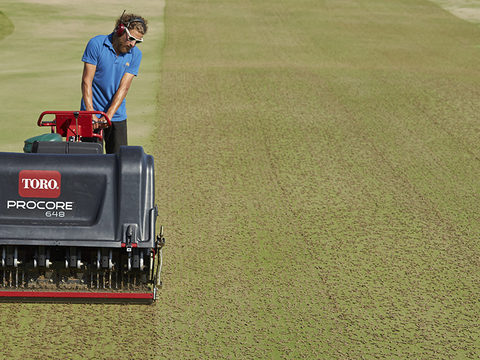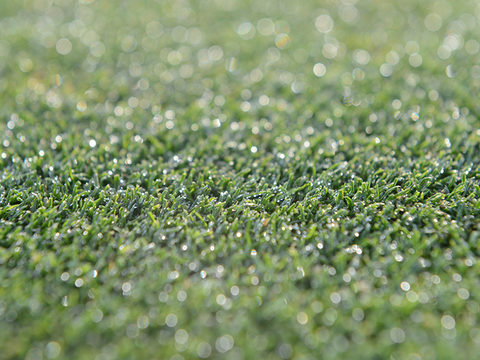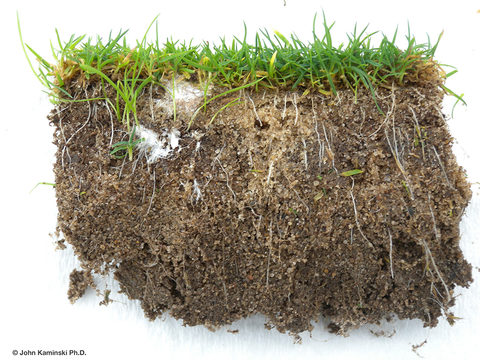Focus on fairy ring - Disease of the Year 2024
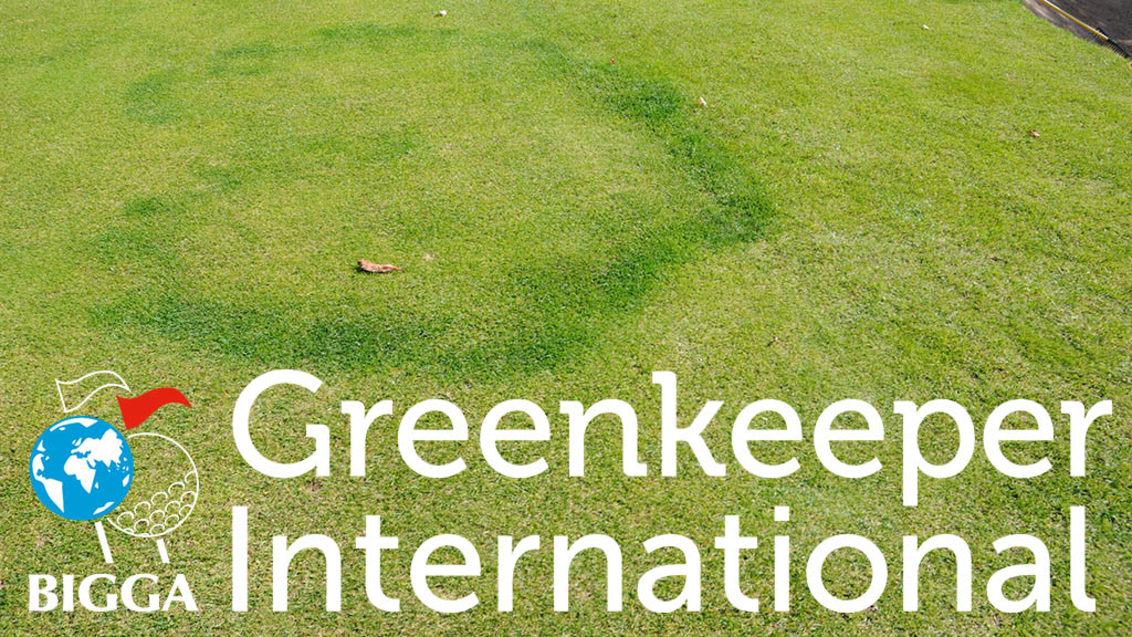
Fairy ring has become an increasingly visible challenge for many golf courses over recent seasons. Changing climate has created conditions for the pathogen to thrive, as well as being more difficult for turf growth to mask the effects.
As a result, the dark unsightly rings can occur at almost any time through the season, typically from April to September, with the rings often getting larger and more noticeable, as well as lasting longer, year on year.
With the increased pressure, cultural controls can struggle to cope and turf less resilient to recover. While in some areas of fairways the turf quality effect is primarily visual, when rings appear on greens consistency can be affected, along with damaging effects during recovery.
For the most part the turf is not infected or attacked by the fairy ring pathogens, however the fungi activity on thatch and organic matter in the profile will physically change the properties of the soil – which in turn impacts on turf health and resilience to stress factors.
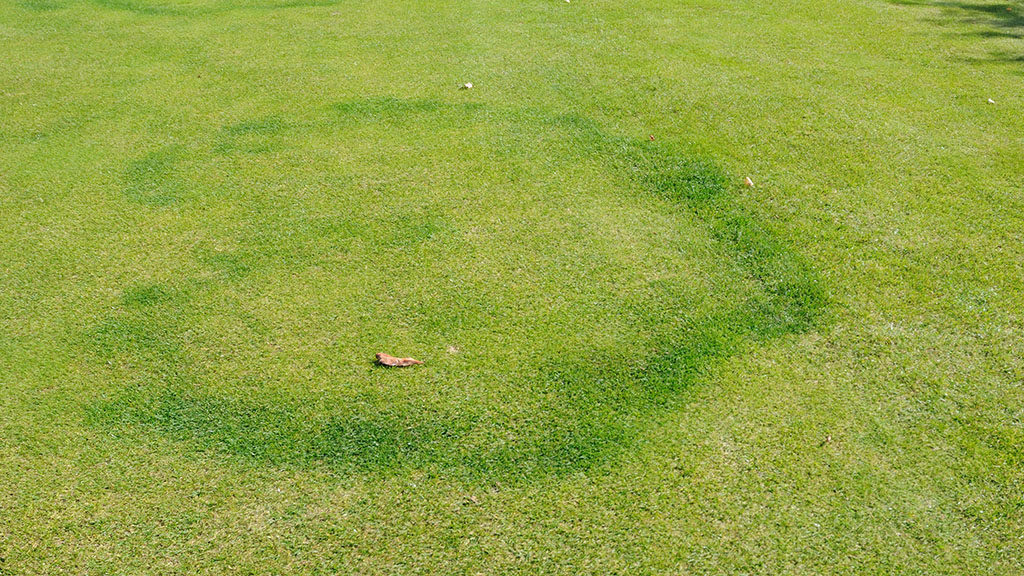
That can manifest itself principally in two ways: creating dry patch symptoms affecting rooting and moisture uptake, along with decomposition of organic matter triggering a release of nutrients that initiate a dark green flush of growth. Often the two aspects can combine with a circle of pale, poor quality turf affected by dry conditions, next to the dark green growth, which further exacerbates the impact of the ring.
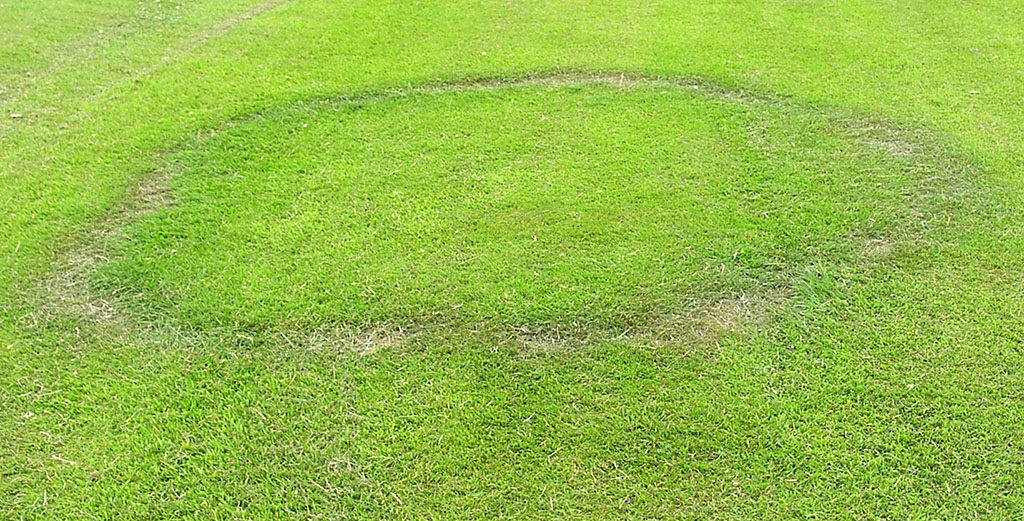
Along with coating soil particles with a hydrophobic compound that repels water and leads to dry patch, the activity of fairy ring fungi can release ammonium to levels that could be toxic to turf, along with the release of hydrogen cyanide and other toxins into the root zone.
Controlling fairy ring is best approached with an integrated turf management (ITM) strategy, utilising cultural controls to combat the physical changes in the soil, combined with a fungicide programme designed to reduce the prolificacy of the pathogen and limit the effects.
Fungicide strategy
Selected fungicides, such as new Ascernity and the well-established Heritage, have been shown to give good results in reducing the incidence of the fairy ring pathogen in the soil. The most effective and reliable results have been with preventative treatments early in the season; once effects are being seen there is little curative control of the symptoms - although work in the US has suggested there may be a useful reduction in the pathogen in the soil, particularly when applied in conjunction with a wetting agent.
Trials in the US with a range of Syngenta fungicides had indicated treatment at soil temperature between 13⁰C and 15⁰C has given the best results, compared to application at cooler or hotter temperatures.
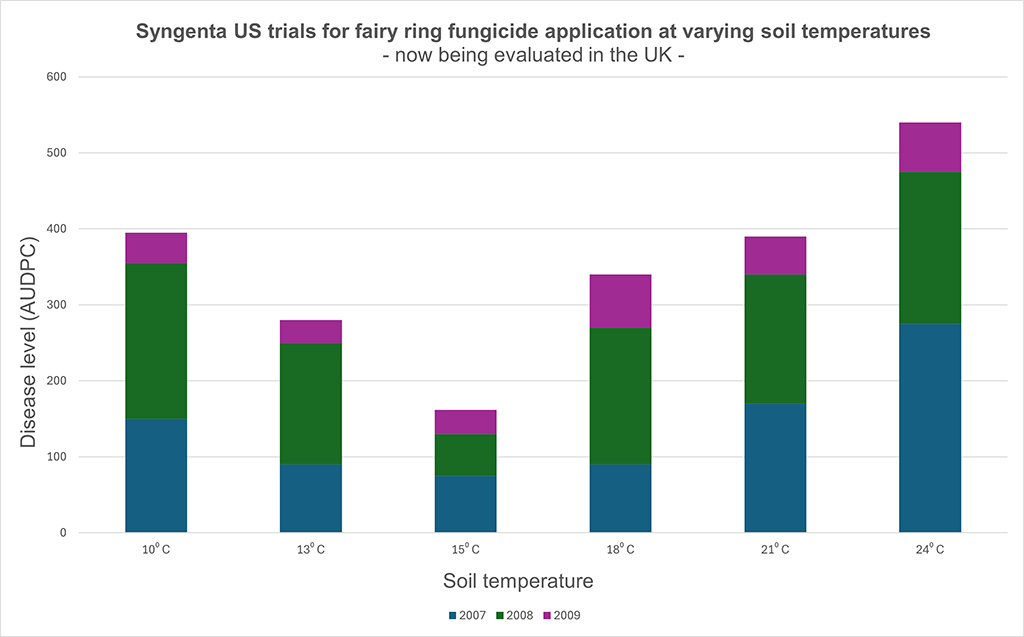
Now, new Syngenta research for the 2024 season in the UK is seeking to refine application timing benefits with Ascernity applied at different soil temperatures, using decision support guidance from the Turf Advisor App. Treatment when soils reach a consistent 8⁰C; 10⁰C; 15⁰C or 20⁰C will be evaluated for fairy ring suppression. This work will combine with Ascernity applications for summer dollar spot and anthracnose control.

There is evidence that tank mixing fungicide treatment for fairy ring with a wetting agent can enhance results by getting the product into the soil. Tank-mixing with Qualibra aims to quickly get the applied product down from the surface, but retain in soil moisture in the root zone.
Moisture management
In addition to the fungicide programme, cultural controls targeting dry patch will reduce its impact, including an effective wetting agent strategy – and most importantly starting that early enough in the season before the issue is ingrained in the soil.
Syngenta Qualibra wetting agent trials have consistently shown it is far better to conserve and mange water resources while there is water available and in the soil profile, compared to attempting to recover when there is limited water resource, be that rainfall or irrigation. Essentially that means starting earlier, in late spring, rather than waiting for the summer.
The dual action polymer component of Qualibra has proven to hold more water deeper in the soil profile that will encourage roots and counter the effects of hydrophobic soils’ dry patch, while the penetrant element moves soil water down from the surface to maintain playing quality and reduce moisture availability for fairy ring fungi.
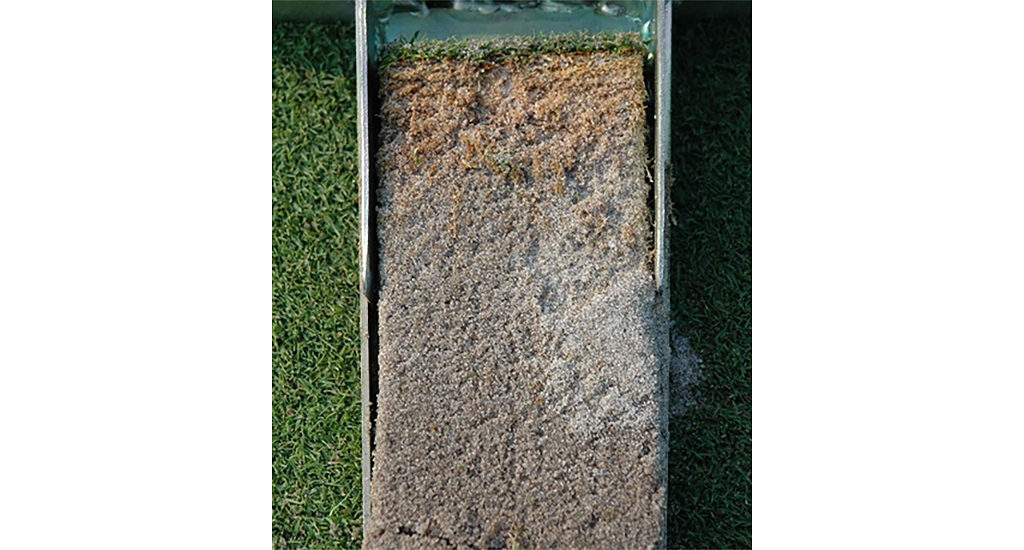
Furthermore, agronomy inputs to encourage and maintain greater root mass through the summer, when fairy ring normally starts to appear, will help to mitigate the effects of dry patch. That is likely to include a Primo Maxx II PGR programme to build stronger rooting, along with a nutrition plan designed to optimise root growth.
Along with an aeration strategy that will both encourage rooting and can help to reduce the organic matter levels that fairy ring relies on to thrive.
Nutrition has an important role in managing the visual effects of fairy ring, since the dark green rings are far more pronounced when surrounding turf is pale and under fertilised. Turf managers have also found aesthetic issues of contrast with dark fairy rings can be effectively masked with Ryder pigment treatments.
Organic matter
Managing organic matter is a key element in the long-term approach for reducing the impact of the pathogen, but is often far more difficult to influence on fairways or semi-rough where some of the most significant, if less impactful, fairy ring are seen.
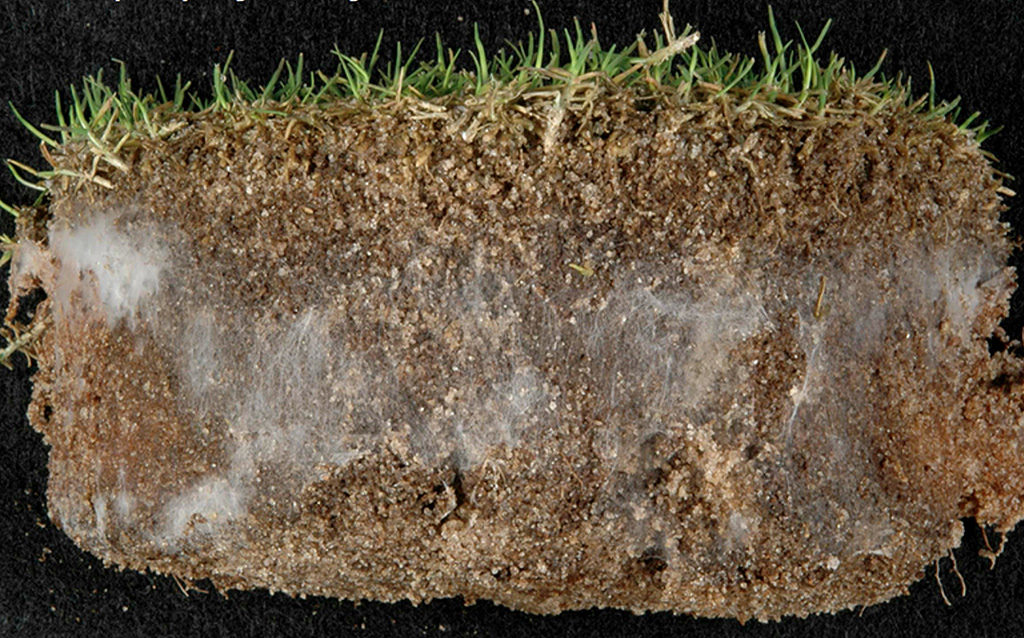
It is also important to identify where the organic matter is in the soil profile, and how that interacts with the specific fairy ring fungi present. Organic matter that is predominantly thatch at the soil surface will have a different implication than OM deeper in the soil profile where the pathogen is active.
While many different basidiomycetes fungi can result in fairy ring, the fundamental difference is that edaphic fungi develop more in the soil and, to a lesser extent, thatch, while lectophilic fungi are more active in the canopy and crown surface thatch. The lectophilic infections that break out as white patch is often referred to a superficial fairy ring.
Type I fairy ring can kill or badly weaken turf, while Type II gives the characteristic green rings or quick growing turf; Type III exhibits as mushroom or fungi fruiting bodies produced in a ring. The type category relates to the symptoms, not the ring itself.
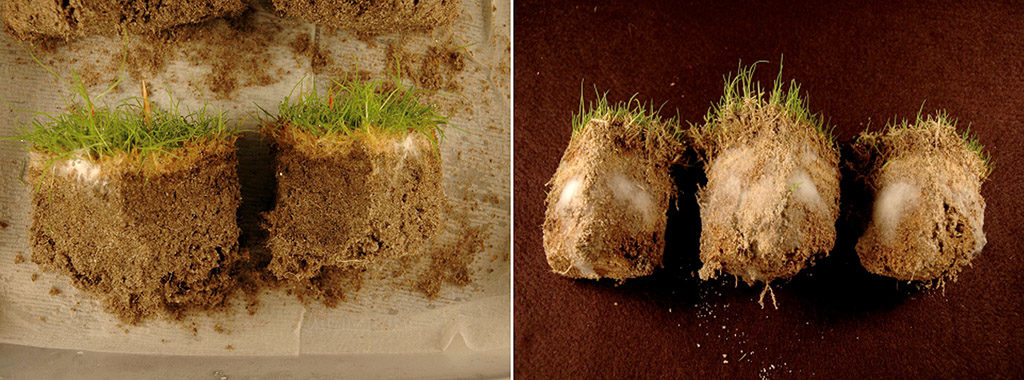
It is possible to take a deep hole core from an area where fairy ring is known to be active and seal that in a plastic bag at relatively high humidity in a warm room. In just a few days fungi could start to develop on roots and organic matter, giving an indication of where the pathogen is present and active.
Application technique
That knowledge can help with application techniques to better target the pathogen. Fungicides for soil-borne pathogens are best applied with a white 08 Syngenta XC Soil Nozzle. The relatively large orifice allows application at a higher water volume, of 600 – 800 l/ha, at a lower operating pressure that generates more large droplets.
Syngenta application research has demonstrated the importance for soil applications of large droplets that are better able to penetrate through to the soil surface and less likely to be retained on the leaf. It is important to keep a forward speed that maintains pressure at less than 2.5 bar while delivering the required water volume; if the pressure rises to retain output at a faster speed, then a higher proportion of smaller droplets will be produced.
Application trials have also shown little or no benefit from aeration prior to application targeting soil borne pathogens, although a light sorrel roll could aid penetration in capped or very dry soils.
More effective is irrigation post application. Application in light rain, or irrigation with 2-3mm of water immediately after application, will minimise fungicide binding onto the leaf wax layer and move it down to the soil surface – but avoid too much water that might lead to pooling or running into low spots.
For convenient application Ascernity or Heritage can be tank mixed with Qualibra, or most other wetting agents, aimed at reaching the soil. However, where fungicides are also looking to target foliar disease, such as dollar spot and anthracnose, application technique may need to be tailored accordingly to the priority to be tackled.


